I heard this phrase a long, long time ago. The market will understand that it is not all about bubbles.
----Left-side trading? Right-side trading?----
First, you need to clarify what is left? What is right?
This point is very important; it's about self-positioning!
If you don't clarify, it's easy to get confused.
Left-side and right-side trading still need to be viewed dialectically.
Just draw a rough sketch, and you will understand:
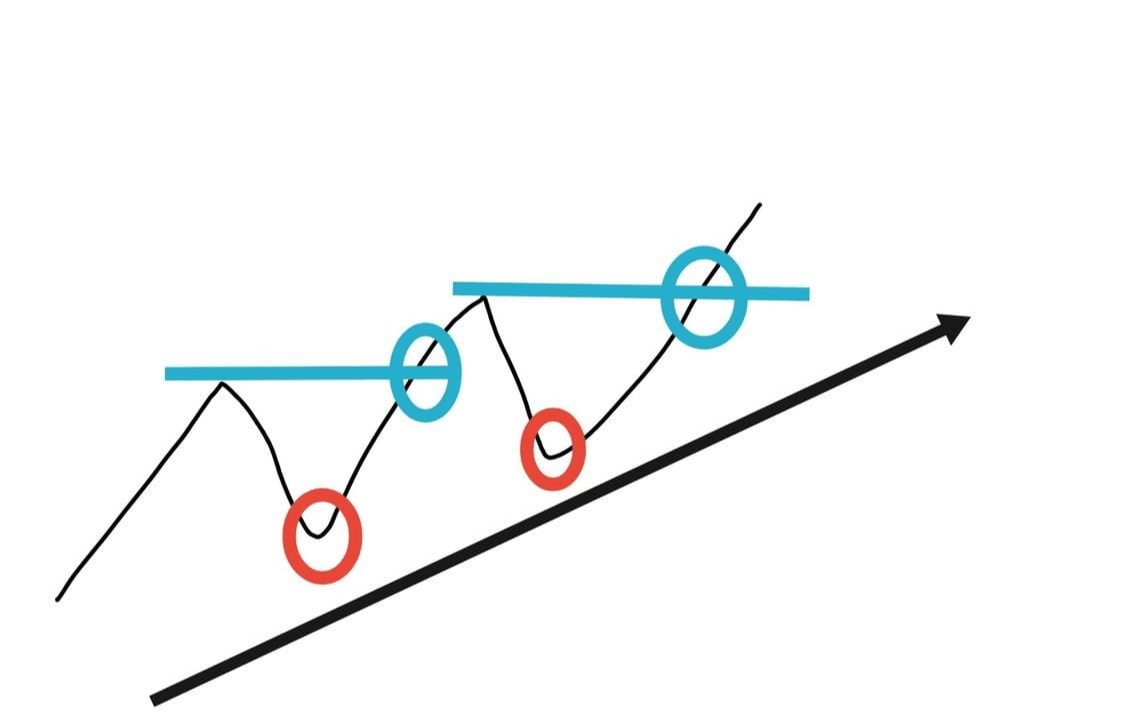 If you want to ride this wave of upward momentum, entering long at the red circle is left-side trading (counter-correction), while entering long at the blue circle is right-side trading (breaking previous highs).
If you want to ride this wave of upward momentum, entering long at the red circle is left-side trading (counter-correction), while entering long at the blue circle is right-side trading (breaking previous highs).
What if the left side of this chart looks like this?
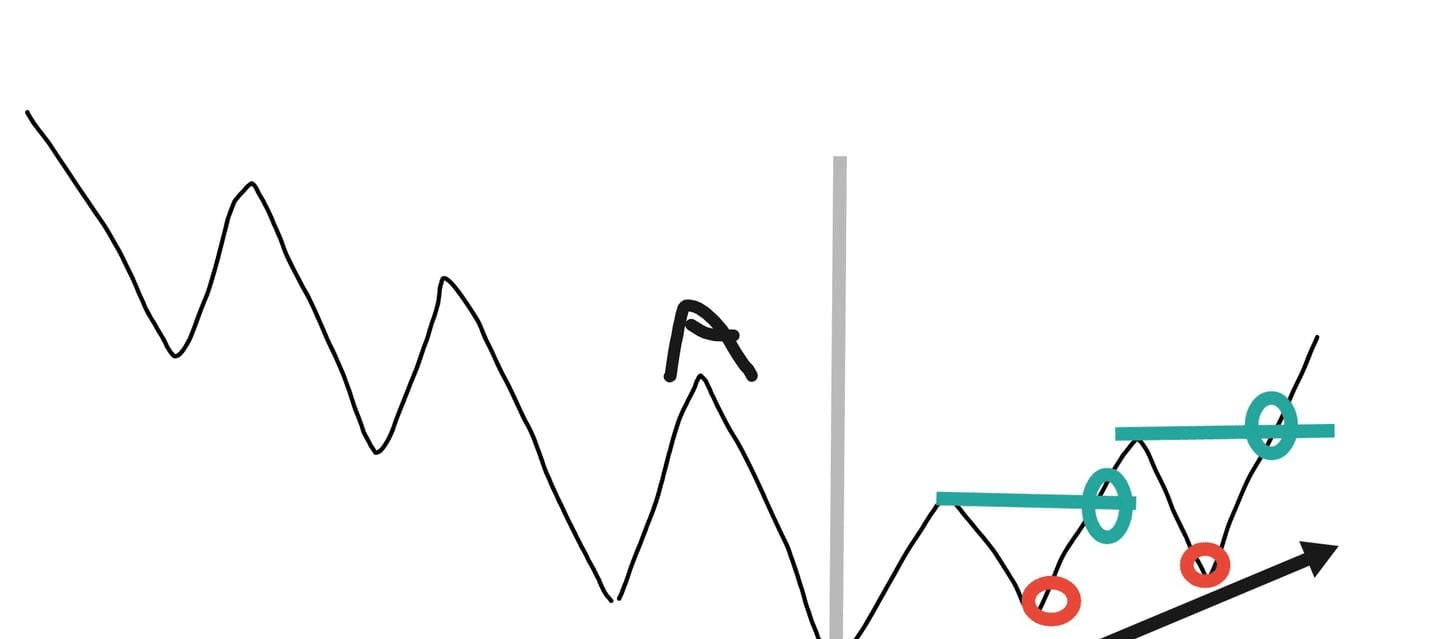 So before the price breaks point A, the original four entry points for longs are actually all left-side trades.
So before the price breaks point A, the original four entry points for longs are actually all left-side trades.
So whether it is left-side trading or right-side trading needs to be determined based on your different perspectives on the market and the technical tools you commonly use for analysis, not something that can be said offhand.
A bit confused?
Let me explain with an example, taking soybean meal 1H chart:
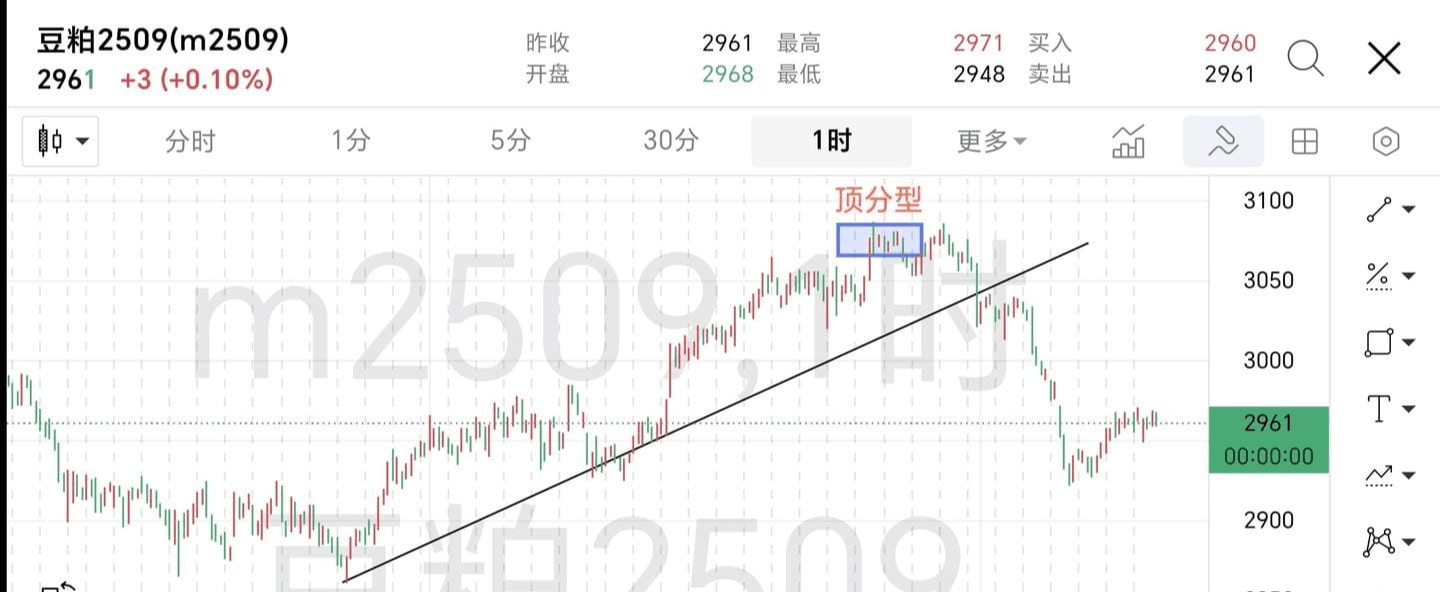 If you are a naked K trader, usually using trend lines to determine the current trend. The price hasn't broken the trend line yet and is still on the left side, but you have learned about the theory of Chen and discover that from that perspective, divergence has appeared, then you see a peak formation sell point 1 and think it's a good time to catch the top, and you enter the market. The stop loss is above the peak formation.
If you are a naked K trader, usually using trend lines to determine the current trend. The price hasn't broken the trend line yet and is still on the left side, but you have learned about the theory of Chen and discover that from that perspective, divergence has appeared, then you see a peak formation sell point 1 and think it's a good time to catch the top, and you enter the market. The stop loss is above the peak formation.
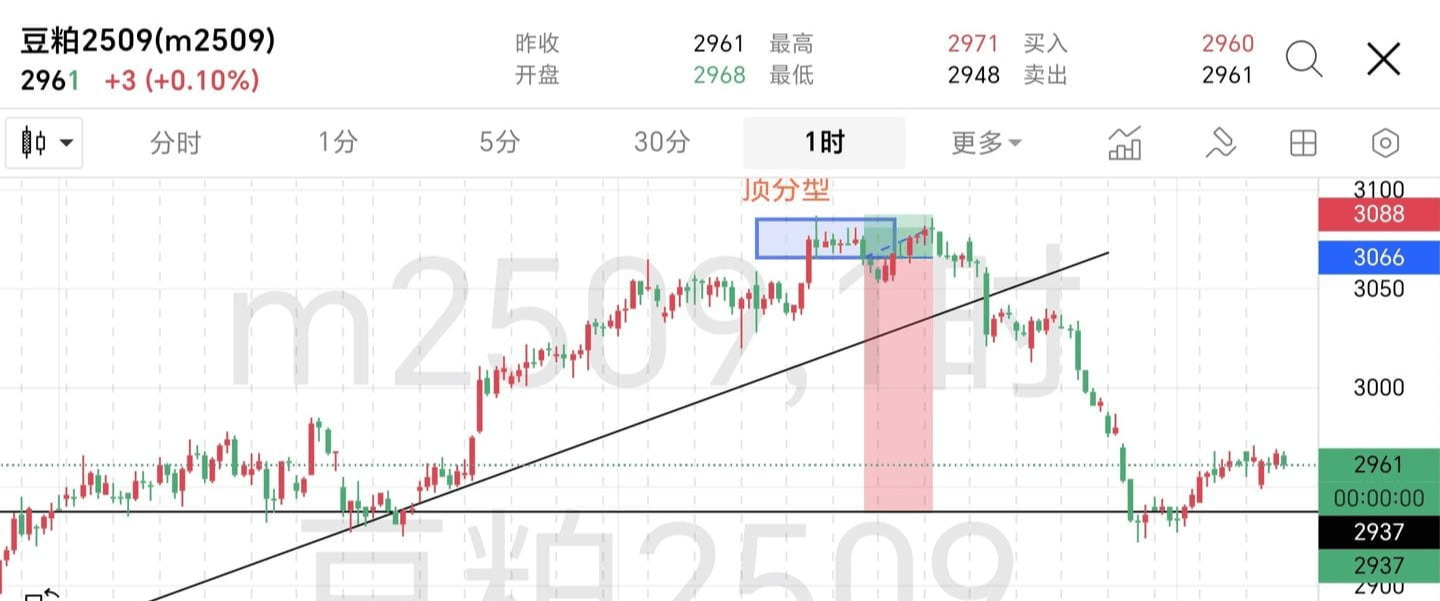 Then this trade is a left-side trade for you. You can see it almost got stopped out, and the reason it didn't get stopped out is likely due to luck (who says divergence must reverse?! Many situations turn into a central zone).
Then this trade is a left-side trade for you. You can see it almost got stopped out, and the reason it didn't get stopped out is likely due to luck (who says divergence must reverse?! Many situations turn into a central zone).
In another situation, although you saw this peak formation's potential top-catching opportunity, you resisted and insisted that the price break the trend line before you captured the opportunity to enter, or waited for sell point 2 before entering, like this:
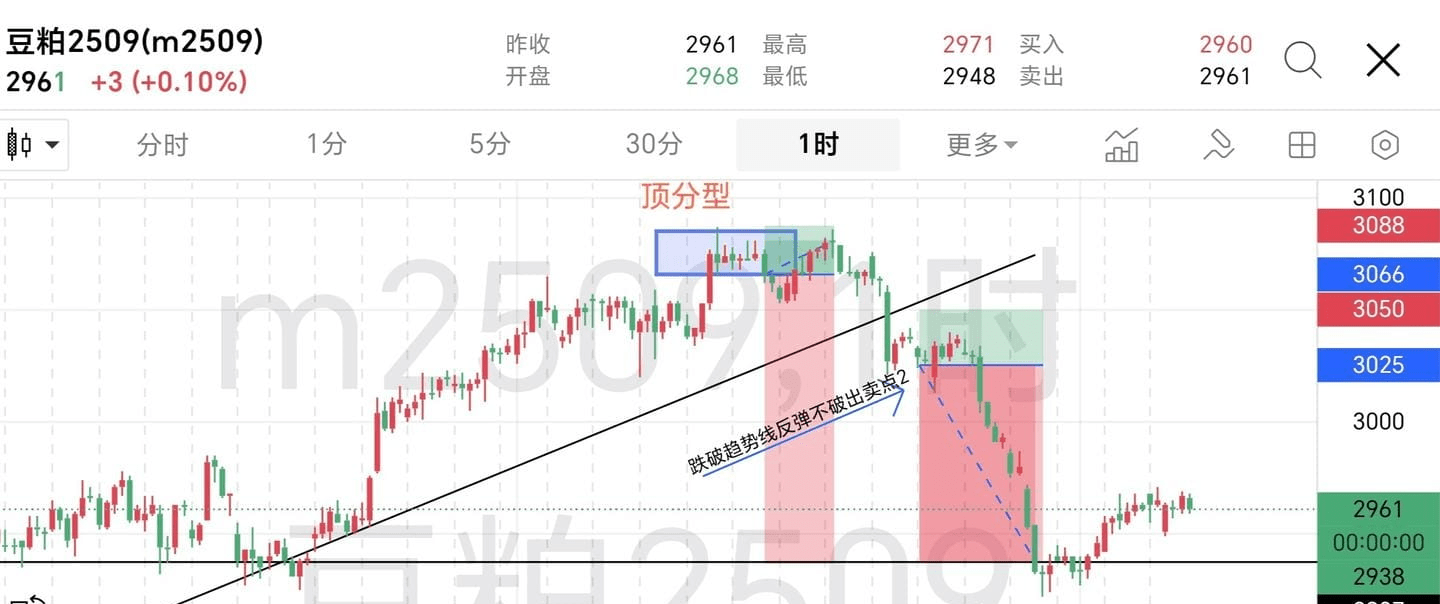 In the end, it also took profit, so this trade is a right-side trade for you.
In the end, it also took profit, so this trade is a right-side trade for you.
Although it also almost got stopped out, the probability is far lower than that of the first left-side trade. Why is that?
Because there is only one true peak in a trend. Before sell point 1, there are actually many 'sell point 1's. If you enter at each 'sell point 1', you will be stopped out many times.
You should understand it this way, right?
To put it bluntly, if you are accustomed to using the theory of Chen, buy point 1/sell point 1 is left-side trading, while buy point 2/sell point 2 is right-side trading.
If defined with a trend line, the left side of the trend line represents left-side trading, while the right side represents right-side trading.
So is it left-side trading that can yield profits, or is it right-side trading that can yield profits?
The answer is both can be done.
But the profit process is different.
1. The risk-reward ratios are different:
Both trades ultimately took profit, but the risk-reward ratio of the first trade was significantly higher than that of the second.
2. Win rates are different:
Based on the same observation of peak formations, you would trade many times before the first trade, but all ended in failure (there is only one true peak).
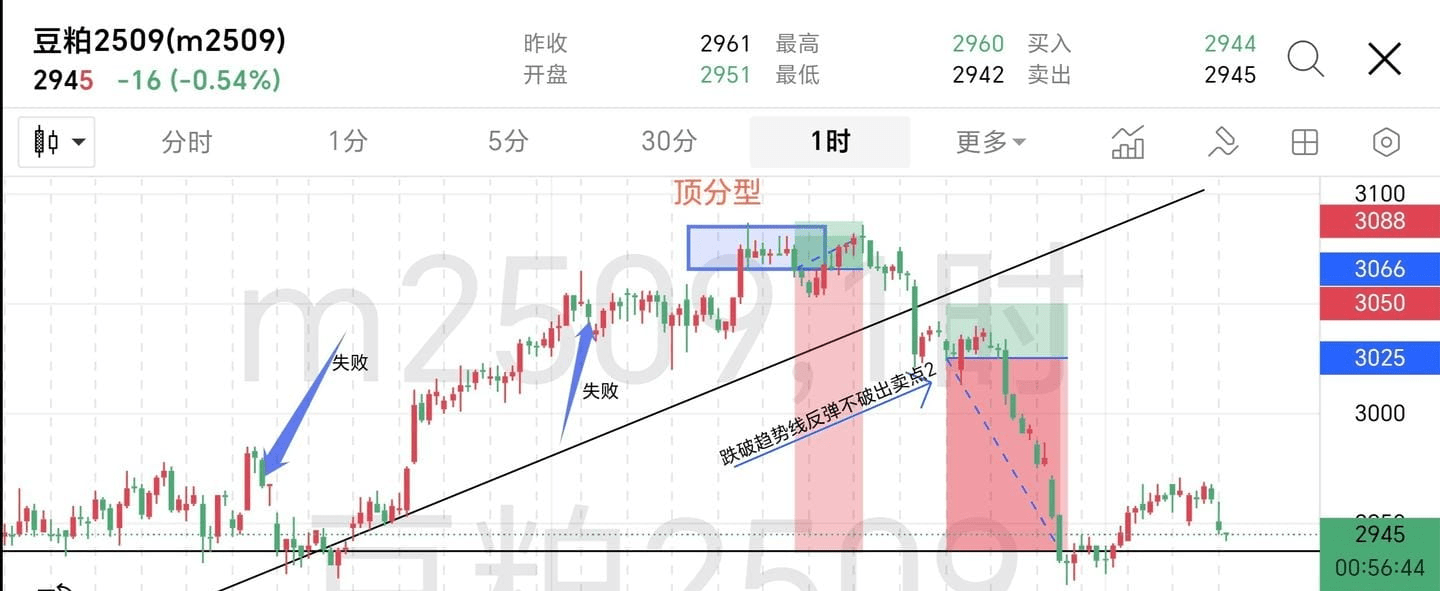 3. Trading opportunities differ in frequency:
3. Trading opportunities differ in frequency:
Left-side trading has more opportunities because when you see peak formations, evening stars, and bearish engulfing patterns, you feel that a reversal is imminent, and you want to jump in and catch the top. Right-side trading opportunities are fewer and often require many conditions to be confirmed before there is an opportunity to enter.
4. Different mindsets:
You said it yourself, the first time you tried to catch the peak, you were stopped out, the second time you tried to catch the peak, you were stopped out... When you really reach the peak, do you still have the courage to enter again?
This should be clear now, right?
Left-side trading is more aggressive, with more opportunities, lower win rates, greater difficulty, and stronger psychological pressure, but the risk-reward ratio is high. You need a few profitable trades to cover many losing trades to achieve profitability. The key is to seize the opportunity and hold on tight!
Right-side trading is more conservative, with fewer opportunities, lower risk-reward ratio, but higher win rates. It requires more patience. If opportunities haven't arisen, just hold back. As long as you can 'wait', without random operations, your trading status will develop in a positive direction, and stable profits can be expected!
Therefore, for novice traders, right-side trading is more suitable for you. Newbies should not think about left-side trading.
Regarding the divergence mentioned above, if you don't quite understand, you can take a look at this:
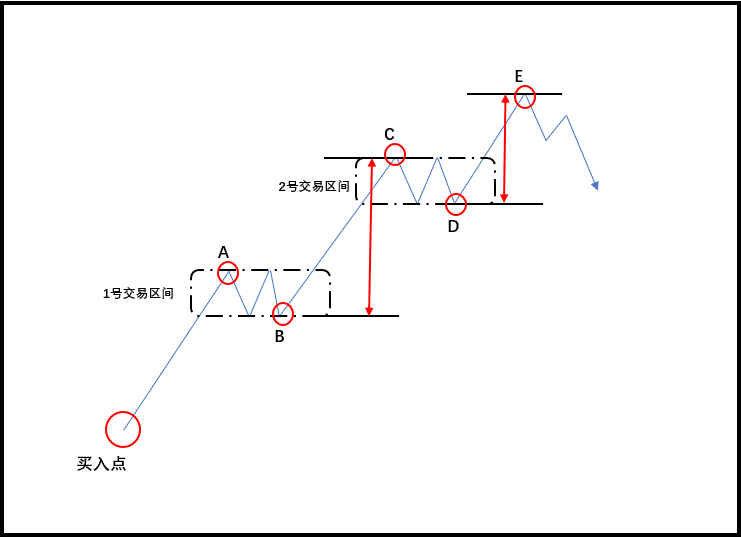 I was afraid of missing out on profits, so I exited before the take-profit signal emerged. How can I break this situation?
I was afraid of missing out on profits, so I exited before the take-profit signal emerged. How can I break this situation?
I am Xiao Yue, a professional analyst and educator, a mentor and friend on your investment journey! As an analyst, the most basic thing is to help everyone make money. I will help you solve confusion and trapped positions, let my strength speak for itself. When you lose your direction and don’t know what to do, follow Xiao Yue, and I will guide you in the right direction$ETH

